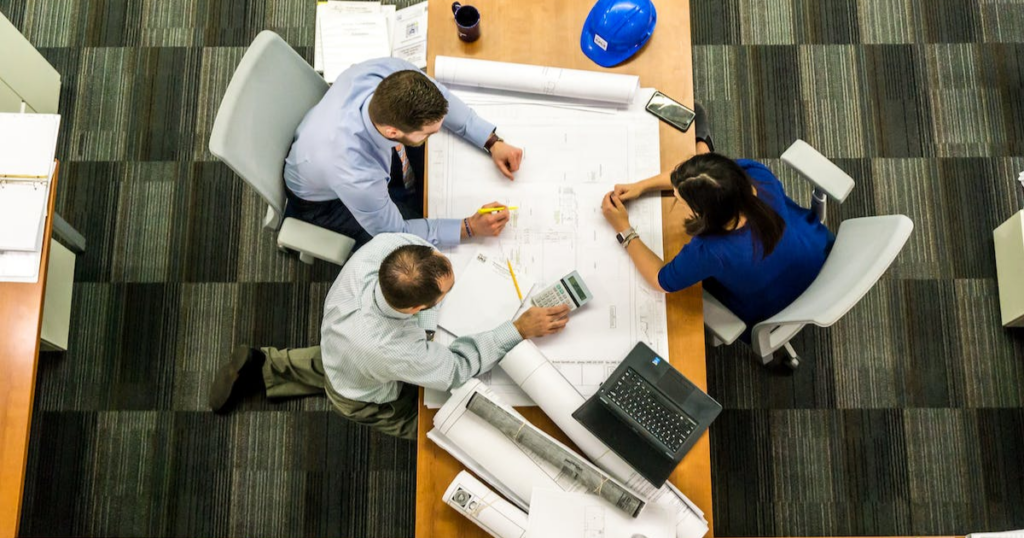Construction risk management is, at its core, a critical component to propelling a business forward and ensuring the full completion of any project. Risk happens everywhere, from safety to project overruns, but the goal of any construction manager is to prepare for any potential risk factors early on. Learn more about the various risk management techniques construction managers use to mitigate potential catastrophic and other risks.
Identify the Risks
The priority for any company is to complete a full risk analysis. It allows for identifying any risk that could hamper the construction project. Through a brainstorming session with applicable stakeholders, companies need to assess any risks that could delay or even effectively eliminate a project. Common risk considerations include:
- Safety-related risks, such as hazard-related risks
- Financial risks include changes to cash flow, poor sales or access to capital, changes to the economic conditions present, and unexpected increases in product and material cost
- Legal risks may include risks related to liability or contract breaches
- Project risk includes poor hiring or a lack of labor, miscalculation of time, poor project management direction, or lack of communication on deliverables
- Environmental risks, including fires, bad weather, or earthquakes, can create risks for organizations
Develop Contingency Plans
Organizations then need to pinpoint the specific solutions for these risks when possible. It’s not possible to predict an earthquake, but it is possible to put in place contingency plans for a period of bad weather, for example. Risk mitigation strategies will typically fall into one of the following categories:
- Avoid the risk by taking actions prior to it to minimize that threat
- Transfer the risk, such as by purchasing insurance to protect against the financial blow from the risk
- Mitigate the risk by taking steps to minimize the risk from happening, such as improving employee training or communication
- Accept the risk for what it is and, as such, deal with it if it happens
Implementing Safety Protocols to Minimize Workplace Accidents
One of the most impactful types of risks to a construction project is workplace injury. According to the U.S. Bureau of Labor Statistics, there were 1,034 workplace deaths that occurred in 2020 on construction sites. In addition, 1 in 5 workplace deaths occurring in the country occurred in the construction industry in 2021. This is a serious risk and one to prioritize.
Several strategies may be applicable to minimizing construction site-related injuries and accidents, including:
- Putting in place strong OSHA-approved safety guidelines and then following them.
- Keep work areas clean and less cluttered.
- Ensure there are regular inspections of all components of the project with a specific safety focus.
- Train employees on how to remain safe in various conditions and what is expected of them when an injury occurs.
- Furnish all necessary personal protective equipment.
- Maintain all machinery to industry standards to reduce the risk of failures.
Managing Financial Risks and Cost Overruns in Construction Projects
Another common project-derailing cost comes in the form of financial risk, which could include any type of change in financial health that leads to difficulty moving a project forward. Identifying these risks and creating a contingency plan is critical to keeping the project moving forward. Mitigation strategies here may include:
- Having a full risk management plan that outlines the financials of the project and expected potential risks, including overruns and delays.
- Identify preventative measures, such as backup funding, robust project controls to reduce the risk of overruns, and conducting a thorough risk assessment on costs at various points in the project.
- Consider alternative strategies and build in contractual provisions to minimize these risks or supply chain challenges.
Monitoring and Adopting Risk Management Strategies Throughout the Project
Risk management is not a one-time process but an ongoing effort to constantly stay ahead of the threats to your project. There are numerous reasons to put in place routine checks and scheduled risk mitigation analysis periods to ensure that the project is moving ahead as desired. The key to this process will be fully understanding the objective and then monitoring progress throughout. Some strategies may include:
- Set up specific timeframes for reviewing project delays, overruns, and safety risks at various intervals.
- Appoint specific parties to oversee these types of risk mitigation strategies.
- Ensure there are multiple layers of insight, including numerous employees and leadership monitoring for risks.
Work to Build a Strong Future with Risk Mitigation Strategies
Proactive risk management is vital for ensuring the success and safety of construction projects of all types. We work to stay on top of risk management specialist recruitment for our clients at MRINetwork. Reach out to us for more information and guidance on how we can help you recruit the best risk management talent.
